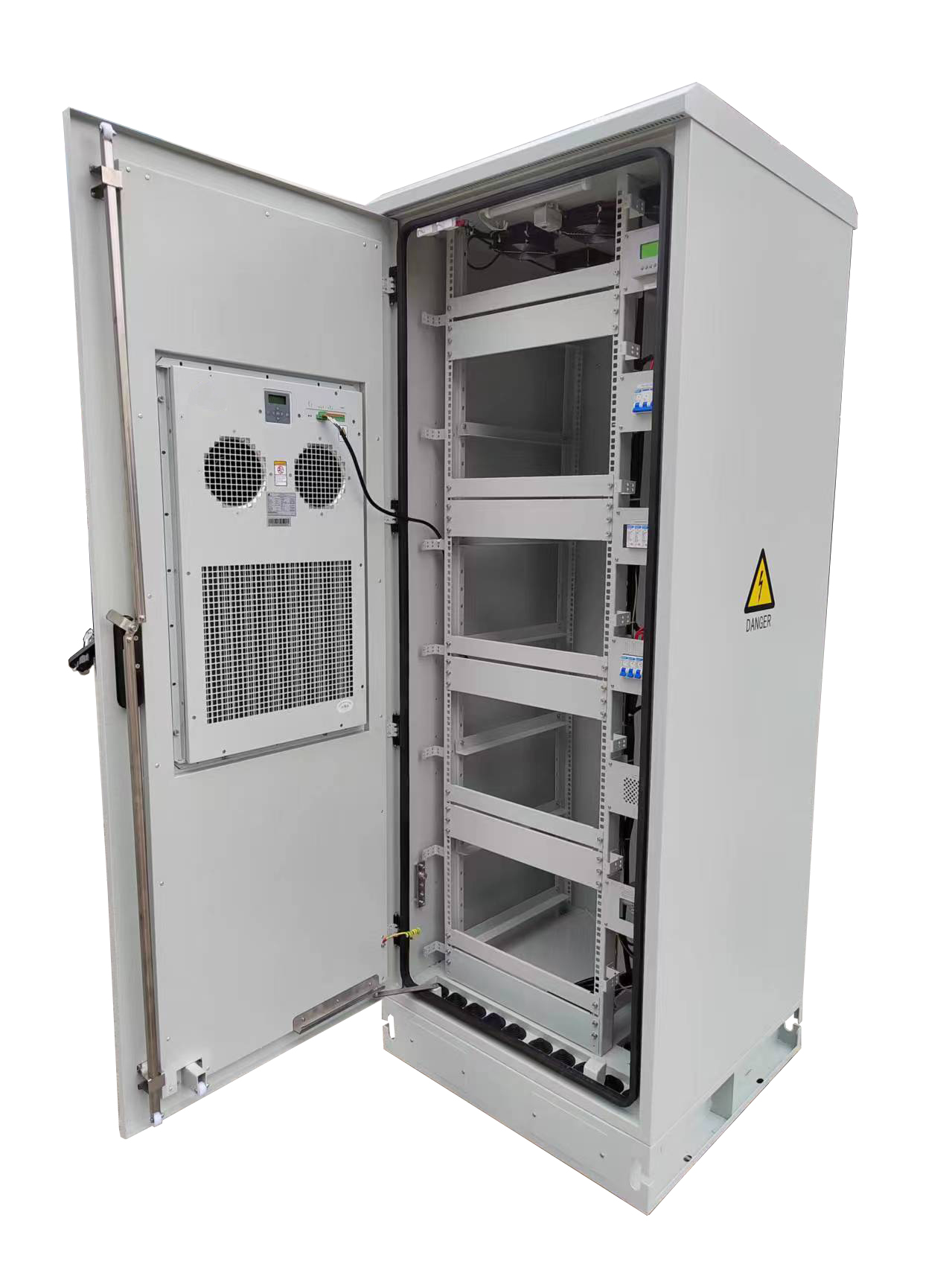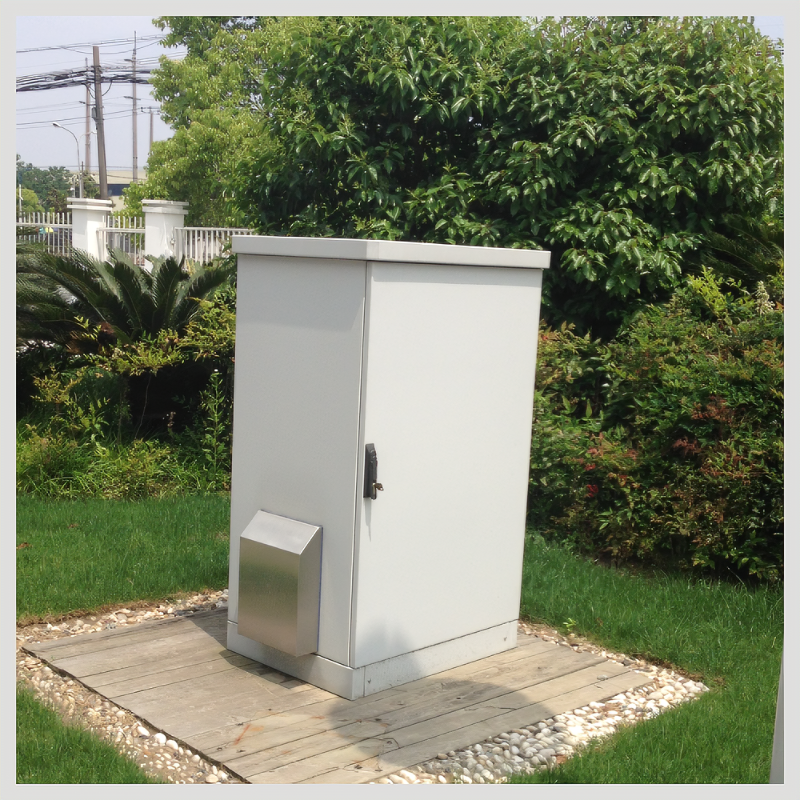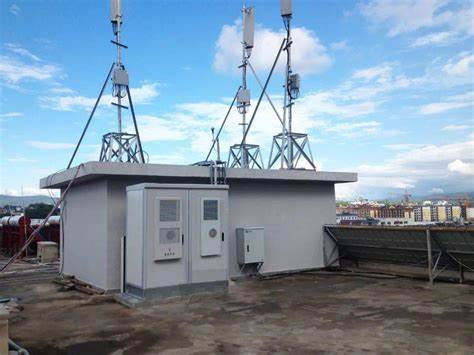Tips for Choosing Communication Cabinets in Tropical Climates

Choosing the right communication cabinet is essential when dealing with Southeast Asia's tropical climate. High humidity, intense heat, and frequent rain can damage equipment if you use unsuitable cabinets. You need 适合东南亚地区使用的通信机柜 to protect your systems from these harsh conditions. Durable materials and climate-resistant designs ensure your equipment stays safe. Compatibility with your infrastructure also plays a key role in smooth operations. Cost-effectiveness matters too, as investing in quality cabinets reduces long-term expenses. By prioritizing these factors, you can ensure reliable performance and extended equipment lifespan.
Key Takeaways
Pick cabinets made of rust-proof materials like stainless steel or aluminum.
Use cabinets with an IP55 rating to block water and dust.
Add good ventilation to stop heat and moisture problems.
Spend on strong cabinets to save on repairs later.
Ask experts about cabinets that work well in tropical areas.
Climate Challenges in Southeast Asia

High Humidity and Its Effects
Risk of Corrosion and Rust
Southeast Asia's tropical climate is characterized by high humidity levels, which can accelerate corrosion and rust in communication cabinets. Moisture in the air reacts with metal surfaces, leading to oxidation. This process weakens the structural integrity of cabinets and compromises their ability to protect sensitive equipment. Using 适合东南亚地区使用的通信机柜 made from corrosion-resistant materials like stainless steel or aluminum can help mitigate this issue.
Impact on Electronic Components
Humidity doesn't just affect the cabinet; it also impacts the electronic components inside. High moisture levels can lead to:
Degradation of equipment performance, especially in infrared applications.
Electrolytic corrosion, where moisture causes metals to corrode at contact points.
Metal migration, leading to short circuits.
Dimensional changes in materials, causing mechanical stress.
Reduction in surface resistivity, which disrupts timing circuits and amplifiers.
To combat these effects, you should choose cabinets with proper sealing and moisture-resistant coatings.
Heat and Temperature Fluctuations
Overheating Risks for Equipment
Southeast Asia often experiences extreme heat, with temperatures exceeding 42°C in some regions. For example, Thailand recorded 49°C in Bangkok during May 2023. Such heat can cause equipment to overheat, leading to malfunctions or permanent damage. Cabinets with double-wall insulation and integrated cooling systems, like air conditioners or heat exchangers, are essential for maintaining optimal temperatures.
Need for Proper Ventilation
Temperature fluctuations can also stress equipment. Rapid changes between hot and cooler conditions may cause condensation inside cabinets, damaging electronic components. Ventilation systems play a crucial role in managing heat and preventing moisture buildup. Opt for 适合东南亚地区使用的通信机柜 with advanced ventilation designs to ensure reliable performance.
Environmental Hazards
Exposure to Rain and Water Ingress
Frequent rainstorms in Southeast Asia increase the risk of water ingress. Without adequate protection, water can seep into cabinets, damaging the equipment inside. Cabinets with high IP ratings, such as IP55, offer excellent resistance to water and dust. These features are vital for outdoor installations.
Dust and Debris in Outdoor Installations
Outdoor communication cabinets face constant exposure to dust and debris. Over time, these particles can clog ventilation systems and interfere with equipment operation. Sealed designs with effective gaskets help keep dust out, ensuring the longevity of your systems.
By addressing these challenges, you can ensure that your communication cabinets remain functional and durable in Southeast Asia's demanding tropical climate.
Material and Design Considerations

Choosing the Right Materials
Benefits of Stainless Steel and Aluminum
The material of your communication cabinet plays a critical role in its durability. Stainless steel and aluminum are excellent choices for tropical climates. Stainless steel resists corrosion, even in high-humidity environments. It maintains its structural integrity over time, ensuring long-term protection for your equipment. Aluminum, on the other hand, is lightweight and also corrosion-resistant. Its natural oxide layer prevents rust, making it a reliable option for outdoor installations. Both materials provide the strength and resilience needed for 适合东南亚地区使用的通信机柜.
Importance of Corrosion-Resistant Coatings
Even the best materials benefit from additional protection. Corrosion-resistant coatings act as a barrier between the cabinet and environmental factors like moisture and salt. These coatings extend the lifespan of your cabinet by preventing rust and wear. Look for cabinets with powder-coated finishes or specialized anti-corrosion treatments. These features ensure your cabinet remains functional and visually appealing, even in challenging conditions.
Understanding IP Ratings
Protection Against Water and Dust
IP ratings measure how well a cabinet resists water and dust. In tropical climates, this protection is essential. The first digit in an IP rating indicates dust resistance, while the second shows water resistance. For example, an IP55 rating means the cabinet is dustproof and can withstand water jets. This level of protection keeps your equipment safe from environmental hazards.
Recommended IP Ratings for Tropical Climates
For Southeast Asia's tropical conditions, you should choose cabinets with at least an IP55 rating. This ensures adequate protection against heavy rain and dust. Higher ratings, like IP65, offer even better resistance, making them ideal for areas with extreme weather. Always check the IP rating before purchasing a cabinet to ensure it meets your needs.
Cabinet Design Features
Ventilation Systems for Heat Management
Proper ventilation is crucial for managing heat inside the cabinet. Without it, equipment can overheat, leading to malfunctions. Cabinets with built-in ventilation systems, such as fans or heat exchangers, help maintain optimal temperatures. Some models also include air conditioning for enhanced cooling. These features ensure your equipment operates efficiently, even in hot climates.
Sealing and Gaskets for Moisture Protection
Moisture can damage electronic components, so sealing is vital. High-quality gaskets create a tight seal around the cabinet's edges, preventing water ingress. These gaskets also block dust and debris, keeping the interior clean. When selecting a cabinet, prioritize designs with robust sealing systems to protect your equipment from tropical weather.
By focusing on materials, IP ratings, and design features, you can choose a cabinet that performs reliably in Southeast Asia's demanding climate.
Infrastructure Compatibility
Size and Mounting Options
Wall-mounted vs. Floor-standing Cabinets
When selecting a communication cabinet, you need to decide between wall-mounted and floor-standing options. Wall-mounted cabinets save space and work well for smaller installations. They are ideal for areas with limited floor space, such as offices or compact telecom sites. Floor-standing cabinets, on the other hand, offer greater capacity and flexibility. These cabinets can house larger equipment and provide better stability, making them suitable for outdoor or high-demand installations.
Space Considerations for Installation
Before installation, evaluate the available space. Ensure the cabinet fits without obstructing other equipment or pathways. For outdoor setups, leave enough clearance around the cabinet for ventilation and maintenance access. Compact designs, like those found in 适合东南亚地区使用的通信机柜, help optimize space while maintaining functionality.
Power Supply and Cable Management
Ensuring Compatibility with Local Power Standards
Power supply compatibility is critical for smooth operations. In Southeast Asia, power supply units must meet standards like the EMC Directive 2014/30/EU and IEC 60950-1. These standards ensure efficient conversion of AC to low-voltage DC power, which is essential for cabinet performance. Redundant power supplies enhance reliability, reducing the risk of downtime. Always verify that your cabinet supports these standards to avoid operational issues.
Organizing Cables to Prevent Overheating
Proper cable management prevents overheating and ensures efficient airflow. Follow these best practices:
Arrange cables neatly to avoid blocking ventilation paths.
Remove unused cables to maintain optimal temperatures.
Place high-density components at the bottom of the rack to improve airflow and stability.
These steps help protect your equipment and extend its lifespan.
Integration with Existing Systems
Ensuring Compatibility with Current Equipment
Your cabinet must integrate seamlessly with existing systems. Check the dimensions and mounting options to ensure they align with your current setup. Cabinets designed for standard 19-inch racks, like those in 适合东南亚地区使用的通信机柜, simplify this process.
Planning for Future Scalability
Plan for future growth when choosing a cabinet. Select a model with extra space and modular features to accommodate additional equipment. Scalable designs save you from costly upgrades later, ensuring your system remains adaptable to changing needs.
By considering size, power compatibility, and integration, you can select a cabinet that supports your infrastructure effectively.
Maintenance and Longevity
Regular Maintenance Practices
Cleaning and Inspecting for Corrosion
Regular cleaning keeps your communication cabinet in optimal condition. Dust and debris can accumulate on the surface and inside the cabinet, leading to potential damage. Use a soft cloth and a mild cleaning solution to remove dirt. Inspect the cabinet for signs of corrosion, especially around edges and joints. Early detection allows you to address rust before it spreads. Cabinets made from materials like stainless steel or aluminum are easier to maintain due to their natural resistance to corrosion.
Checking Seals and Ventilation Systems
Seals and ventilation systems play a critical role in protecting your equipment. Check the gaskets regularly for cracks or wear. Damaged seals can allow moisture and dust to enter, compromising the cabinet's interior. Ventilation systems, including fans or air conditioners, should also be inspected to ensure they function properly. Clean the vents and replace filters as needed to maintain airflow and prevent overheating.
Durability Enhancements
Using Anti-Corrosion Sprays or Coatings
Applying anti-corrosion sprays or coatings adds an extra layer of protection to your cabinet. These products create a barrier that prevents moisture from reaching the metal surface. Focus on areas prone to rust, such as hinges and locks. Powder-coated finishes are particularly effective for long-term durability.
Upgrading Components for Extended Lifespan
Upgrading certain components can significantly extend the lifespan of your cabinet. Replace outdated locks with anti-theft systems to enhance security. Consider installing advanced ventilation systems or heat exchangers to improve temperature regulation. These upgrades ensure your cabinet remains reliable even in challenging tropical conditions.
Monitoring Environmental Conditions
Using Sensors for Temperature and Humidity
Sensors provide real-time data on environmental conditions inside the cabinet. Look for sensors with high accuracy, such as those measuring humidity from 0% to 80% RH with ±3% accuracy and temperature from -40℃ to 60℃ with ±0.5℃ accuracy. Popular options include:
IMX12-CCM: Features temperature and humidity sensors with alarms for threshold exceedance.
Modbus Sensor: Measures temperature and humidity with precision, ensuring optimal conditions.
Sensor Type | Features |
|---|---|
IMX12-CCM | Contains temperature and humidity sensors, alarms on threshold exceedance |
Modbus Sensor | Measures temperature (-40℃ to 60℃) and humidity (0% to 80%) with accuracy |
Adjusting Maintenance Schedules Based on Conditions
Environmental conditions vary, so adjust your maintenance schedule accordingly. Cabinets in high-humidity areas may require more frequent inspections. Use sensor data to identify trends and plan maintenance activities. Proactive adjustments help prevent issues before they escalate, ensuring your equipment stays protected.
By following these practices, you can maximize the lifespan and reliability of your communication cabinets in tropical climates.
Balancing Cost and Quality
Evaluating Long-Term Costs
Cost of Repairs vs. Initial Investment
When choosing a communication cabinet, you should think beyond the initial price tag. Cheaper cabinets may seem appealing, but they often lead to higher repair costs. Rust, water damage, or overheating can result in frequent maintenance or even equipment replacement. Investing in a high-quality cabinet upfront reduces these risks. Durable materials and advanced features, like corrosion-resistant coatings and proper ventilation, save you money over time.
Energy Efficiency and Operational Savings
Energy-efficient cabinets help lower operational costs. Features like double-wall insulation and built-in cooling systems reduce energy consumption. For example, cabinets with heat exchangers use less power than traditional air conditioning units. By choosing energy-efficient designs, you not only save money but also contribute to a more sustainable operation.
Prioritizing Key Features
Focusing on Essential Climate-Resistant Features
In tropical climates, you should prioritize cabinets with features that address humidity, heat, and environmental hazards. Look for IP-rated designs, corrosion-resistant materials, and effective ventilation systems. These features ensure your equipment stays protected and functional. Avoid compromising on these essentials, as they directly impact the cabinet's performance.
Avoiding Unnecessary Add-Ons
While advanced features may seem attractive, not all are necessary for your specific needs. For example, if your installation site has stable temperatures, you may not need air conditioning. Focus on features that address your environment and operational requirements. This approach helps you avoid overspending on unnecessary add-ons.
Finding Reliable Suppliers
Importance of Warranties and Certifications
Reliable suppliers provide warranties and certifications that guarantee product quality. Look for certifications like ISO9001 and CE, which indicate adherence to international standards. Warranties offer peace of mind, ensuring you receive support if issues arise.
Researching Customer Reviews and Case Studies
You can identify trustworthy suppliers by researching their market reputation. Customer reviews reveal real-world experiences with the supplier's products and services. Case studies highlight how their cabinets perform in similar conditions.
Conduct online research to find suppliers with positive feedback.
Look for detailed case studies that showcase successful installations.
By evaluating costs, focusing on essential features, and choosing reliable suppliers, you can balance quality and affordability effectively.
Choosing the right communication cabinet ensures your equipment stays protected in Southeast Asia's tropical climate. Focus on climate resistance, durable materials, and infrastructure compatibility to achieve reliable performance. Long-term investments in quality cabinets reduce maintenance costs and extend equipment lifespan.
💡 Tip: Consult experts or suppliers familiar with tropical climates, such as Tianjin Estel Electronic Science and Technology Co., Ltd, to find 适合东南亚地区使用的通信机柜 that meet your needs.
By prioritizing these factors, you can safeguard your systems and ensure uninterrupted operations.
FAQ
What is the ideal material for communication cabinets in tropical climates?
Stainless steel and aluminum work best. Stainless steel resists corrosion and maintains strength in humid conditions. Aluminum is lightweight and naturally rust-resistant. Both materials provide durability and protection against tropical weather challenges.
How do IP ratings help in choosing a cabinet?
IP ratings indicate protection levels against dust and water. For tropical climates, choose cabinets with at least an IP55 rating. This ensures resistance to heavy rain and dust, safeguarding your equipment from environmental hazards.
Why is ventilation important for communication cabinets?
Ventilation prevents overheating and moisture buildup. Cabinets with fans, heat exchangers, or air conditioning maintain optimal temperatures. Proper airflow ensures your equipment operates efficiently, even in extreme heat.
How can I ensure my cabinet integrates with existing systems?
Choose cabinets designed for standard 19-inch racks. Verify dimensions and mounting options match your current setup. Opt for scalable designs to accommodate future equipment upgrades.
What maintenance practices extend cabinet lifespan?
Regularly clean the cabinet and inspect for corrosion. Check seals and ventilation systems for wear. Use anti-corrosion sprays and upgrade components like locks or cooling systems to enhance durability.
💡 Tip: Always monitor environmental conditions with sensors to adjust maintenance schedules effectively.
See Also
Tips for Maintaining Ideal Temperatures in Outdoor Telecom Cabinets
The Importance of Air Conditioning in Outdoor Communication Cabinets
Selecting the Right Mount for Outdoor Telecom Cabinets
Assessing Materials for Durable Outdoor Telecom Cabinets
Exploring the Function of Outdoor Communication Cabinets in Telecom
CALL US DIRECTLY
86-13752765943
3A-8, SHUIWAN 1979 SQUARE (PHASE II), NO.111, TAIZI ROAD,SHUIWAN COMMUNITY, ZHAOSHANG STREET, NANSHAN DISTRICT, SHENZHEN, GUANGDONG, CHINA

